
Will LSST Solve the Mysteries of Dark Matter and Dark Energy? (Kavli Hangout)
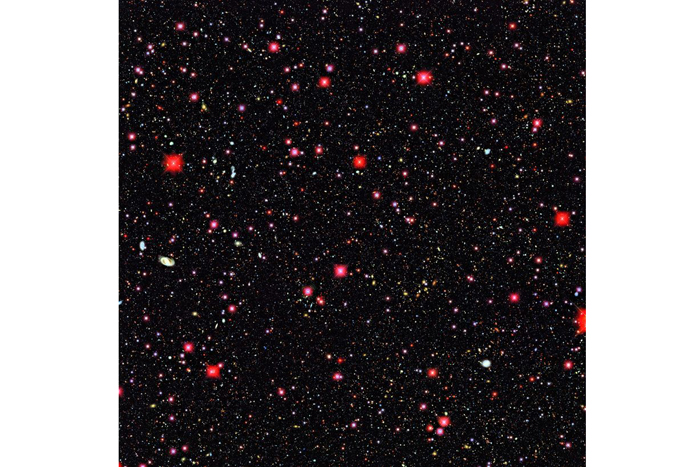
Adam Hadhazy, writer and editor for The Kavli Foundation, contributed this article to Space.com's Expert Voices: Op-Ed & Insights.
During a traditional Chilean stone-laying ceremony, the first building block of a powerful new astronomical observatory, the Large Synoptic Survey Telescope (LSST), was placed in the ground on Cerro Pachón in Chile April 14. Although LSST will not see first light until 2022, the astronomical community is already abuzz about how this ambitious project will open up the "dark universe" of dark matter and dark energy as never before. That mysterious substance and force make up 95 percent of the universe's mass and energy, yet scientists are largely in the dark, as it were, about what they are.
One of the keys to LSST's potential is its 3.2 gigapixel camera, the biggest digital camera slated for construction to date. Another key is LSST's comprehensive sweep of the heavens. Every few days, the telescope will survey the entire Southern Hemisphere's sky. An astounding 30 terabytes of data will be collected nightly. After just a month of scanning the sky, LSST will have observed a greater share of the cosmos than all previous astronomical surveys combined.
On April 2, 2015, two astrophysicists and a theoretical physicist spoke with The Kavli Foundation about how LSST's deep search for dark matter and dark energy will answer fundamental questions about our universe's composition.
Steven Kahn — is the director of LSST and a natural sciences professor in the Kavli Institute for Particle Astrophysics and Cosmology (KIPAC) at Stanford University. He is an experimental astrophysicist with broad interests in instrumentation, observation and theory.
Sarah Bridle — is a professor of astrophysics in the Extragalactic Astronomy and Cosmology research group of the Jodrell Bank Center for Astrophysics in the School of Physics and Astronomy at the University of Manchester. She has served as the project scientist for the United Kingdom's proposal to join LSST and she presently is co-coordinator of the Weak Lensing Working Group of the Dark Energy Survey (DES), a precursor cosmological project to LSST.
Hitoshi Murayama — is the director of the Kavli Institute for the Physics and Mathematics of the Universe (Kavli IPMU) at the University of Tokyo and a professor at the Berkeley Center for Theoretical Physics at the University of California, Berkeley. His work as a theoretical physicist spans a wide range of topics including particle physics, dark matter and dark energy. Kavli IPMU is a partner in the Hyper Suprime-Cam project, another precursor to LSST.
Get the Space.com Newsletter
Breaking space news, the latest updates on rocket launches, skywatching events and more!
The following is an edited transcript of their roundtable discussion. The participants have been provided the opportunity to amend or edit their remarks.
The Kavli Foundation: Steven, when the LSST takes its first look at the universe seven years from now, why will this be so exciting to you?
Steven Kahn: In terms of how much light it will collect and its field of view, LSST is about ten times bigger than any other survey telescope either planned or existing. This is important because it will allow us to survey a very large part of the sky relatively quickly and to do many repeated observations of every part of the Southern Hemisphere over ten years. By doing this, the LSST will gather information on an enormous number of galaxies. We'll detect something like 20 billion galaxies.
Sarah Bridle: That's a hundred times as many as we're going to get with the current generation of telescopes, so it's a huge increase. With the data, we're going to be able to make a three-dimensional map of the dark matter in the universe using gravitational lensing. Then we're going to use that to tell us about how the “clumpiness” of the universe is changing with time, which is going to tell us about dark energy.
TKF: How does gathering information on billions of galaxies help us learn more about dark energy?
Hitoshi Muryama: Dark energy is accelerating the expansion of the universe and ripping it apart. The questions we are asking are: Where is the universe going? What is its fate? Is it getting completely ripped apart at some point? Does the universe end? Or does it go forever? Does the universe slow down at some point? To understand these questions, it's like trying to understand how quickly the population of a given country is aging. You can't understand the trend of where the country is going just by looking at a small number of people. You have to do a census of the entire population. In a similar way, you need to really look at a vast amount of galaxies so you can understand the trend of where the universe is going. We are taking a cosmic census with LSST.
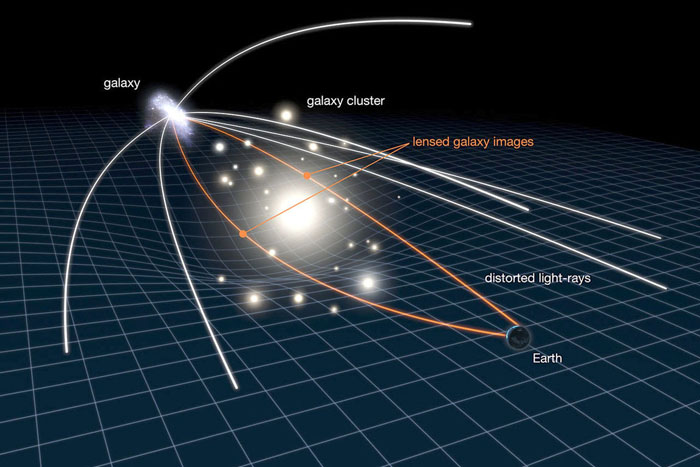
TKF: The main technique the LSST will use to learn more about dark energy will be gravitational lensing (see sidebar). Dark energy is the mysterious, invisible force that is pushing open and shaping the universe. Can you elaborate on why this is important and how will LSST help realize its full potential?
S.B.: It's extremely difficult to detect the dark energy that seems to be causing our universe to accelerate. Through gravitational lenses, however, it's possible by observing how much dark matter is being pulled together by gravity. And by looking at how much this dark matter clumps up early and later on in the universe, we can see how much the universe is being stretched apart at different times. With LSST, there will be a huge increase in the number of galaxies that we can detect and observe. LSST will also let us identify how far away the galaxies are. This is important. If we want to see how fast the universe is clumping together at different times, we need to know at what time and how far away we're looking.
S.K.: With LSST, we're trying to measure the subtle distortion of the appearance of galaxies caused by clumps of dark matter. We do this by looking for correlations in galaxies' shapes depending on their position with respect to one another. Of course, there's uncertainty associated with that kind of measurement on the relatively small scales of individual galaxies, and the dominant source of that uncertainty is that galaxies have intrinsic shapes—some are spiral-shaped, some are round, and so on, and we are seeing them at different viewing angles, too. Increasing the number of galaxies with LSST makes doing this a far more statistically powerful and thus precise measurement of the effect of gravitational lensing caused by dark matter and how the clumping of dark matter has changed over the universe's history.
LSST will also help address something called cosmic variance. This happens when we're making comparisons of what we see against a statistical prediction of what an ensemble of possible universes might look like. We only live in one universe, so there's an inherent error associated with how good those statistical predictions are of what our universe should look like when applied to the largest scales of great fields of galaxies. The only way to try and statistically beat that cosmic variance down is to survey as much of the sky as possible, and that's the other area where LSST is breaking new ground.
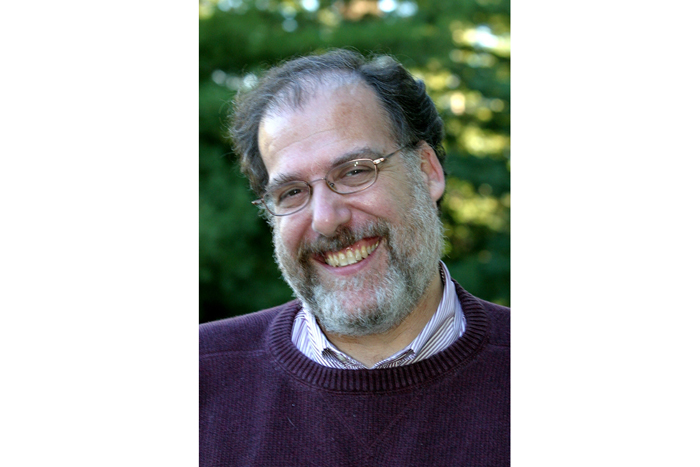
TKF: Will the gravitational lensing observations by LSST be more accurate than anything before?
S.K.: One of the reasons I personally got motivated to work on LSST was because of the difficulty in making the sort of weak lensing measurements that Sarah described.
S.B.: Typically, telescopes distort the images of galaxies by more than the gravitational lensing effect we are trying to measure. And in order to learn about dark matter and dark energy from gravitational lensing, we've got to not just detect the gravitational lensing signal but measure it to about a one-percent accuracy. So we've got to rid of these effects from the optics in the telescope before we can do anything to learn about cosmology.
S.K.: A lot of the initial work in this field has been plagued by issues associated with the basic telescopes and cameras used. It was hard to separate out the cosmic signals that people were looking for from spurious effects that were introduced by the instrumentation. LSST is actually the first telescope that will have ever been built with the notion of doing weak lensing in mind. We have taken great care to model in detail the whole system, from the telescope to the camera to the atmosphere that we are looking through, to understand the particular issues in the system that could compromise weak lensing measurements. That approach has been a clear driver in how we design the facility and how we calibrate it. It's been a big motivation for me personally and for the entire LSST team.
TKF: As LSST reveals the universe's past, will it also help us predict the future of the universe?
H.M.: Yes, it will. Because LSST will survey the sky so quickly and repeatedly, it will show how the universe is changing over time. For example, we will be able to see how a supernova changes from one time period to another. This kind of information should prove extremely useful in deciphering the nature of dark energy , for instance.
S.K.: This is one way LSST will observe changes in the universe and gather information on dark energy beyond gravitational lensing. In fact, the way the acceleration of the universe by dark energy was first discovered in 1998 was through the measurement of what are called Type Ia supernovae. These are exploding stars where we believe we understand the typical intrinsic brightness of the explosion. Therefore, the apparent brightness of a supernova — how faint the supernova appears when we see it — is a clear measure of how far away the object is. That is because objects that are farther away are dimmer than closer objects. By measuring a population of Type Ia supernovae, we can figure out their true distances from us and how those distances have increased over time. Put those two pieces of information together, and that's a way of determining the expansion rate of the universe.
This analysis was done for the initial discovery of the accelerating cosmic expansion with a relatively small number of supernovae — just tens. LSST will measure an enormous number of supernovae, something like 250,000 per year. Only a smaller fraction of those will be very well characterized, but that number is still in the tens of thousands per year. That will be very useful for understanding how our universe has evolved.
TKF: LSST will gather a prodigious amount of data. How will this information be made available to scientists and the public alike for parsing?
S.K.: Dealing with the enormous size of the data base LSST will produce is a challenge. Over its ten-year run, LSST will generate something like a couple hundred petabytes of data, where a petabyte is 10-to-the-15th bytes. That's more data, by a lot, than everything that's ever been written in any language in human history.
The data will be made public to the scientific community largely in the form of catalogs of objects and their properties. But those catalogs can be trillions of lines long. So one of the challenges is not so much how you acquire and store the data, but how do you actually find anything in something that big? It's the needle in the haystack problem. That's where there need to be advances because the current techniques that we use to query catalogs, or to say "find me such and such," they don't scale very well to this size of data. So a lot of new computer science ideas have to be invoked to make that work.
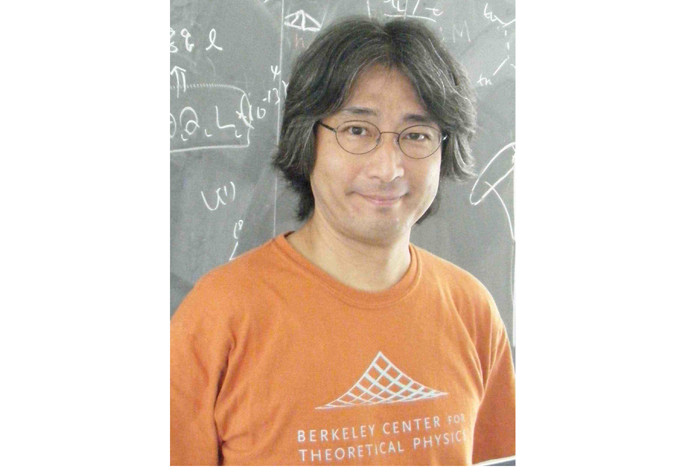
H.M.: One thing that we at Kavli IPMU are pursuing right now is a sort of precursor project to LSST called Hyper Suprime-Cam, using the Subaru Telescope. It's smaller than LSST, but it's trying to do many of the things that LSST is after, like looking for weak gravitational lensing and trying to understand dark energy. We already are facing the challenge of dealing with a large data set. One aspect we would like to pursue at Kavli IPMU, and of course LSST is already doing it, is to get a lot of people in computer science and statistics involved into this. I believe a new area of statistics will be created by the needs of handling these large data sets. It's a sort of fusion, the interdisciplinary aspects of this project. It's a large astronomy survey that will influence other areas of science.
TKF: Are any "citizen science" projects envisioned for LSST, like Galaxy Zoo, a website where astronomy buffs classify the shapes of millions of galaxies imaged by the Sloan Digital Sky Survey?
S.K.: Data will be made available right away. So LSST will in some sense bring the universe home to anybody with a personal computer, who can log on and look at any part of the southern hemisphere's sky at any given time. So there's a tremendous potential there to engage the public not only in learning about science, but actually in doing science and interacting directly with the universe.
We have people involved in LSST that are intimately tied into Galaxy Zoo. We're looking into how to incorporate citizens and crowdsource the science investigations of LSST. One of these investigations is strong gravitational lensing. Sarah has talked about weak gravitational lensing, which is a very subtle distortion to the appearance of the background galaxies. But it turns out if you put a galaxy right behind a concentration of dark matter found in a massive foreground galaxy cluster, then the distortions can get very significant. You can actually see multiple images of the background galaxy in a single image, bent all the way around the foreground galaxy cluster. The detection of those strong gravitational lenses and the analysis of the light patterns you see within them also yields complementary scientific information about cosmological fundamental parameters. But it requires sort of recognizing what is in fact a strong gravitational lensing event, as well as modeling the distribution of dark matter that gives rise to the strength of that particular lensing. Colleagues of Hitoshi and myself have already created a tool to help with this effort, called SpaceWarps (www.spacewarps.org). The tool lets the public look for strong gravitational lenses using data from the Sloan Digital Sky Survey and to play around with dark matter modeling to see if they can get something that looks like the real data.
H.M.: This has been incredibly successful. Scientists have developed computer programs to automatically look for these strongly lensed galaxies, but even an algorithm written by the best scientists can still miss some of these strong gravitationally lensed objects. Regular citizens, however, often manage to find some candidates for the strongly lensed galaxies that the computer algorithm has missed. Not only will this be great fun for people to get involved, it can even help the science as well, especially with a project as large as LSST.
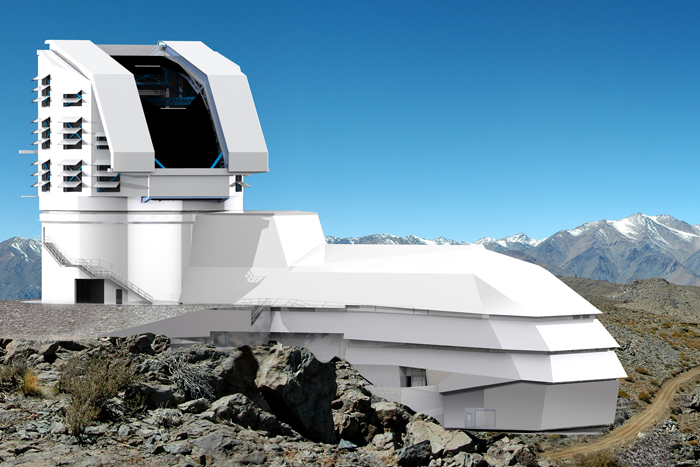
TKF: In the hunt for dark energy's signature on the cosmos, LSST is just one of many current and planned efforts. Sarah, how will LSST observations tie in with the Dark Energy Survey you're working on, and Hitoshi, with will LSST complement the Hyper Suprime-Cam?
S.B.: So the Dark Energy Survey is going to image one-eighth of the whole sky and have 300 million galaxy images. About two years of data have been taken so far, with about three more years to go. We'll be doing maps of dark matter and measurements of dark energy. The preparation for LSST that we are doing via DES will be essential.
H.M.: Hyper Suprime-Cam is similar to the Dark Energy Survey. It's a nearly billion pixel camera looking for nearly 10 million galaxies. Following up on the Hyper Suprime-Cam imaging surveys, we would like to measure what we call spectra from a couple million galaxies.
S.K.: The measurement of spectra as an addition to imaging tells us not only about the structure of matter in the universe but also how much the matter is moving with respect to the overall, accelerating cosmic expansion due to dark energy. Spectra are an additional, very important piece of information in constraining cosmological models.
H.M.: We will identify spectra with an instrument called the Prime Focus Spectrograph, which is scheduled to start operations in 2017 also on the Subaru telescope. We will do very deep exposures to get the spectra on some of these interesting objects, such as galaxies where lensing is taking place and supernovae, which will also allow us to do much more precise measurements on dark energy.
Like the Hyper Suprime-Cam, LSST can only do imaging. So I'm hoping when LSST comes online in the 2020s, we will already have the Prime Focus Spectrograph operational, and we will be able to help each other. LSST's huge amount of data will contain many interesting objects we would like to study with this Prime Focus Spectrograph.
S.K.: All these dark matter and dark energy telescope projects are very complementary to each other. It's because of the scientific importance of these really fundamental pressing questions — what is the nature of dark matter and dark energy? — that the various different funding institutions around the world have been eager to invest in such an array of different complementary projects. I think that's great, and it just shows how important this general problem is.
TKF: Hitoshi, you mentioned earlier the interdisciplinary approach fostered by LSST and projects like it, and you've spoken before about how having different scientific disciplines and perspectives together leads to breakthrough thinking — a major goal of Kavli IPMU. Your primary expertise is in particle physics, but you work on many other areas of physics. Could you describe how observations of the very biggest scales of the dark universe with LSST will inform work on the very smallest, subatomic scales, and vice versa?
H.M.: It's really incredible to think about this point. The biggest thing we can observe in the universe has to have something to do with the smallest things we can think of and all the matter we see around us.
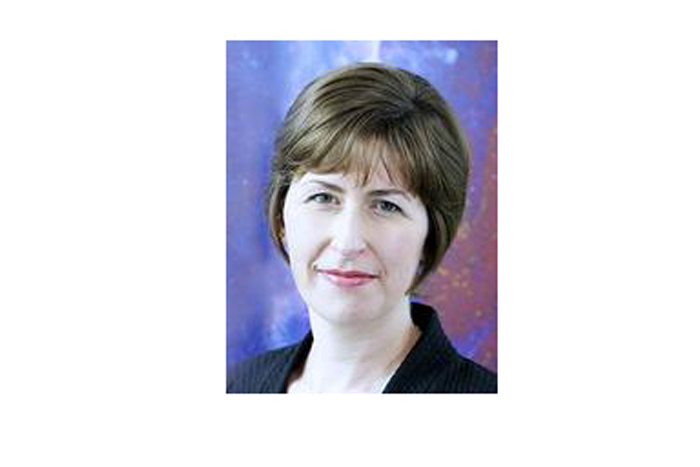
S.B.: It is amazing that you can look at the largest scales and find out about the smallest things.
H.M.: For more than a hundred years, particle physicists have been trying to understand what everything around us is made of. We made huge progress by building a theory called the standard model of particle physics in the 20th century, which is really a milestone of science. Discovering the Higgs boson at the Large Hadron Collider at CERN in 2012 really nailed that the standard model is the right theory about the origin of everything around us. But it turns out that what we see around us is actually making up only five percent of the universe. So there is this feeling among particle physicists of "what have we been doing for a hundred years?" We only have five percent of the universe! We still need to understand the remaining 95 percent of the universe, which is dark matter and dark energy. It's a huge problem and we have no idea what they are really.
A way I explain what dark matter is: It's the mother from whom we got separated at birth. What I mean by this is without dark matter, there's no structure to the universe — no galaxies, no stars—and we wouldn't be here. Dark matter, like a mother, is the reason we exist, but we haven't met her and have never managed to thank her. So that's the reason why we would like to know who she is, how she came to exist and how she shaped us. That's the connection between the science of looking for the fundamental constituents of the universe, which is namely what particle physicists are after, and this largest scale of observation done with LSST.
TKF: Given LSST's vast vista on the Universe, it is frankly expected that the project will turn up the unexpected. Any ideas or speculations on what tracking such a huge portion of the universe might newly reveal?
S.K.: That's sort of like asking, "what are the unknown unknowns?" [laughter]
TKF: Yes — good luck figuring those out!

S.K.: Let me just say, one of the great things about astrophysics is that we have explicit theoretical predictions we're trying to test out by taking measurements of the universe. That approach is more akin to many other areas of experimental physics, like searching for the Higgs boson with the Large Hadron Collider, as Hitoshi mentioned earlier. But there's also this wonderful history in astronomy that every time we build a bigger and better facility, we always find all kinds of new things we never envisioned.
If you go back — unfortunately I'm old enough to remember these days — to the period before the launch of the Hubble Space Telescope, it's interesting to see what people had thought were going to be the most exciting things to do with Hubble. Many of those things were done and they were definitely exciting. But I think what many people felt was the most exciting was the stuff we didn't even think to ask about, like the discovery of dark energy Hubble helped make. So I think a lot of us have expectations of similar kinds of discoveries for facilities like LSST. We will make the measurement we're intending to make, but there will be a whole bunch of other exciting stuff that we never even dreamed of that'll come for free on top.
S.B.: I'm a cosmologist and I'm very excited for what LSST is going to do for cosmology, but I'm even more excited that it's going to be taking very, very short 15-second exposures of the sky. LSST is going to be able to discover all these changing, fleeting objects like supernovae that Hitoshi talked about, but it's a whole new phase of discovery. It's inevitable we're going to discover a whole load of new stuff that we've never even thought of.
H.M.: I'm sure there will be surprises!
Follow all of the Expert Voices issues and debates — and become part of the discussion — on Facebook, Twitter and Google+. The views expressed are those of the author and do not necessarily reflect the views of the publisher. This version of the article was originally published on Space.com.
Join our Space Forums to keep talking space on the latest missions, night sky and more! And if you have a news tip, correction or comment, let us know at: community@space.com.

Adam Hadhazy is a contributing writer for Live Science and Space.com. He often writes about physics, psychology, animal behavior and story topics in general that explore the blurring line between today's science fiction and tomorrow's science fact. Adam has a Master of Arts degree from the Arthur L. Carter Journalism Institute at New York University and a Bachelor of Arts degree from Boston College. When not squeezing in reruns of Star Trek, Adam likes hurling a Frisbee or dining on spicy food. You can check out more of his work at www.adamhadhazy.com.









